Dear Reader, in this age of AI created content, please support with your goodwill someone who works harder to provide the human-made. Sign up in the righthand column or bottom of this page. You will receive my hand illustrated monthly newsletter RESTORE NATURE and access to the biodiversity garden design course as I write...and nothing else, I respect your time.
Plant a food forest
Part one of building a natural carbon sequestration machine:
a framework of hardy food bearing trees for the food forest
The building of a food forest as part of a natural carbon sequestration machine involves preparing the soil, and planting up thickly with hardier food plants and support plants, and adding until all the tiers of the food forest are complete. Hardier plants should act as pioneers and the other productive plants can be planted in later. There is no greater authority on the subject than Geoff Lawton, but other ideas are welcome and you can send me a comment on the bottom of the page.
Therefore, let me start by listing my trees grown from seed and cuttings. In the tree
layer there will also be the native leguminous trees as support species. I will cover them
in another article.
These tree planting suggestions cost nothing except water. They can grow from seed, its so easy. Just collect seed from parking lots, street trees and parks. I will recap with a list at the bottom.
The bare bones for starting a food forest in
Mediterranean zones.
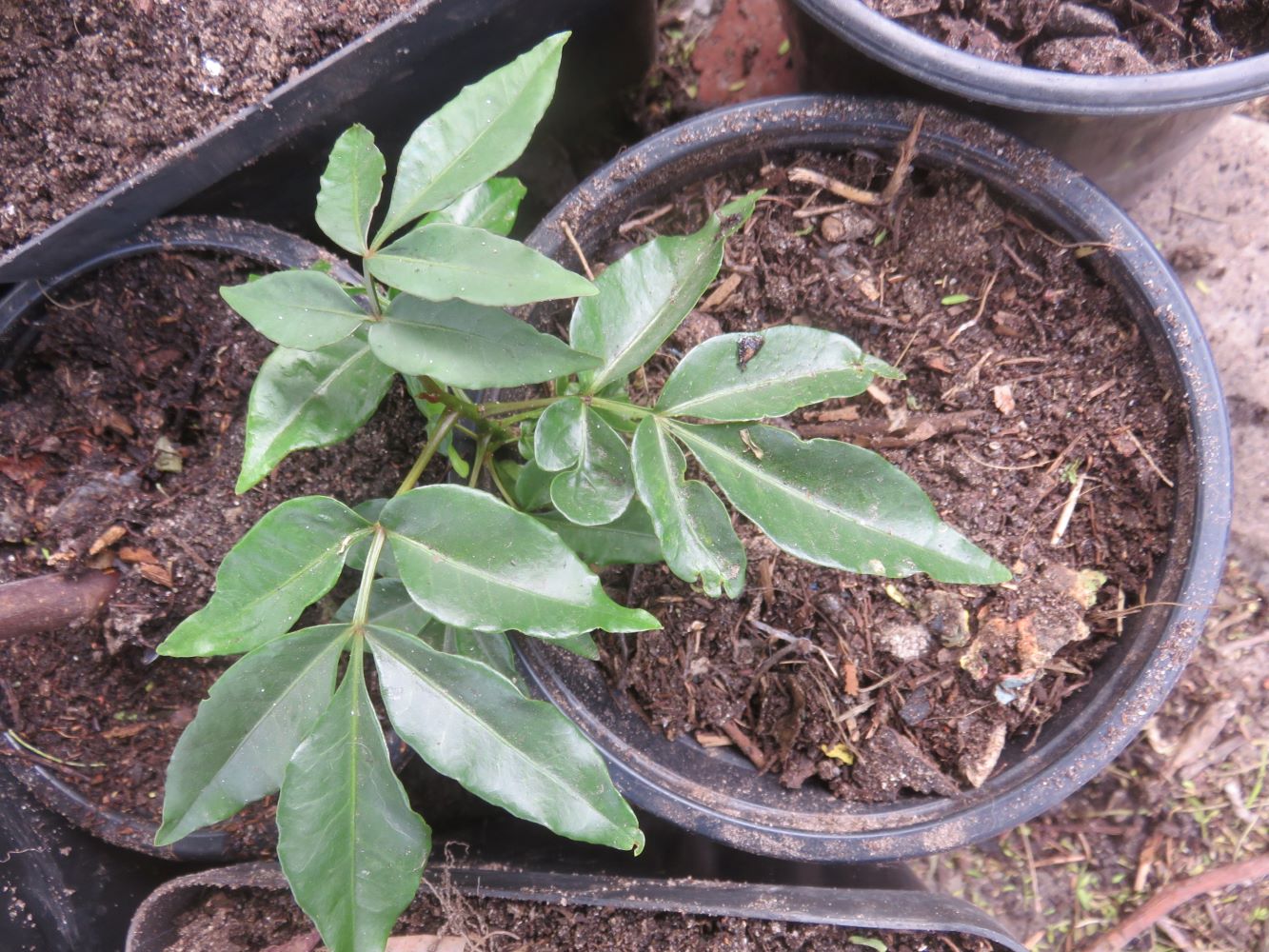 Umgwenya, or wild plum sapling. It is the most drought tolerant and can grow really large.
Umgwenya, or wild plum sapling. It is the most drought tolerant and can grow really large.Umgwenya (native to the eastern regions of South Africa)
The tallest tree, topping canopies in
the east of South Africa is the wild plum. Wild plum or Umgwenya
(Harpephyllum caffrum) take many months to germinate, but with enough
seeds, and the trees shed a lot you will get results. The thin
skinned berries had the highest antioxidant levels of a suite of
about ten known high anti-oxidant berries like blue-berrries, so they
are among the anti-oxidant richest cultivated berries in the world.
The saplings can grow in small containers and get really root bound
without dying and need little water. The adult trees grow slowly in our
neighbourhood in deep sand, dry for much of the year, but their roots
appear to be invasive, lifting walls and tarmac, but not as badly as a
ficus. I have a page on growing them here.
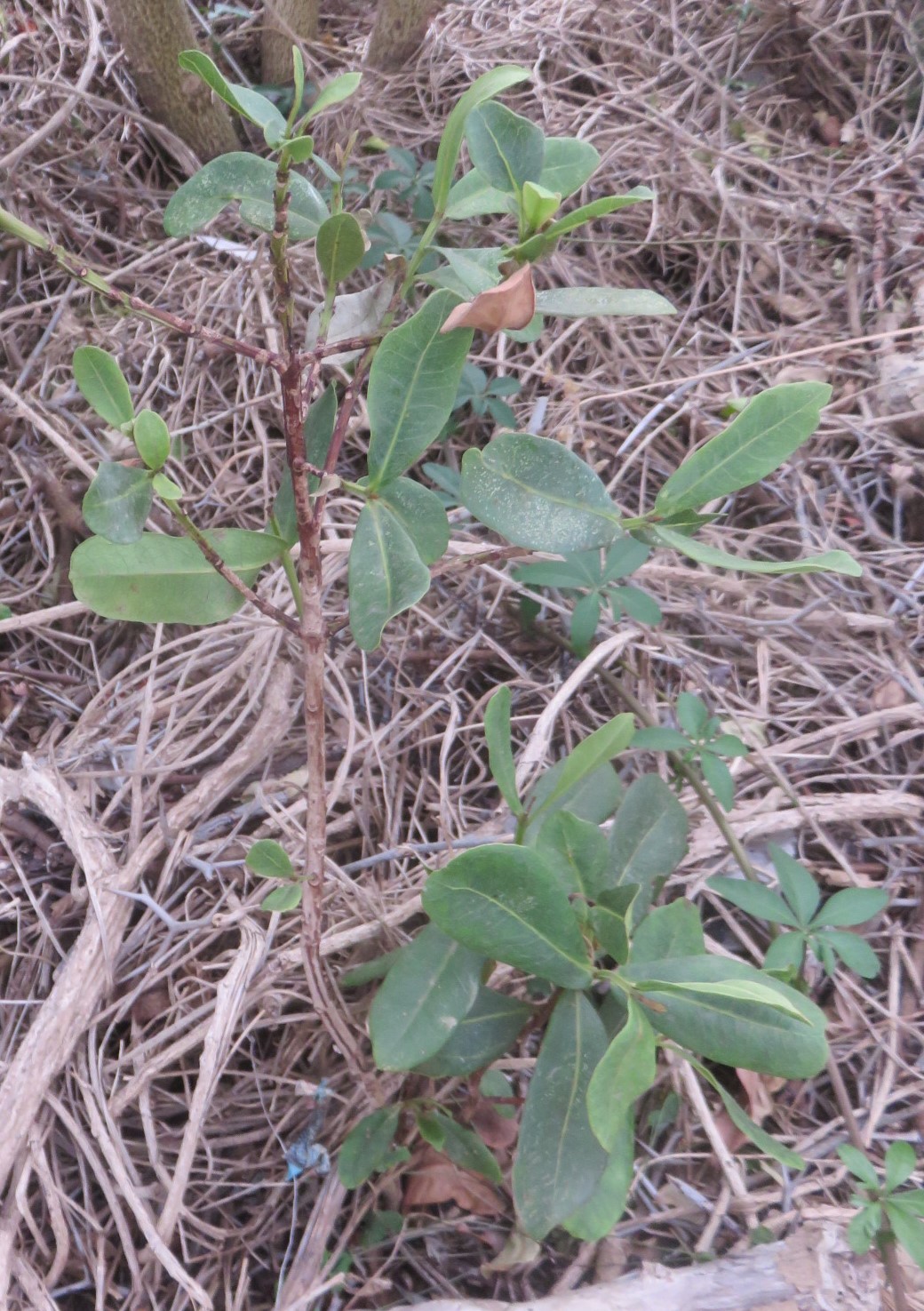 An indoni, or waterberry. Grown from fruit harvested in a parking lot, and now growing in my food forest.
An indoni, or waterberry. Grown from fruit harvested in a parking lot, and now growing in my food forest.Indoni (native to eastern and northern regions of South Africa)
Waterberry is
next. It can grow very large, but in parking lots it remains small
for decades. If you remove the fruit, the little green seed grows
easily. Germination is also slow. The saplings need a lot more water,
even after planting out. Find out more about growing them here.
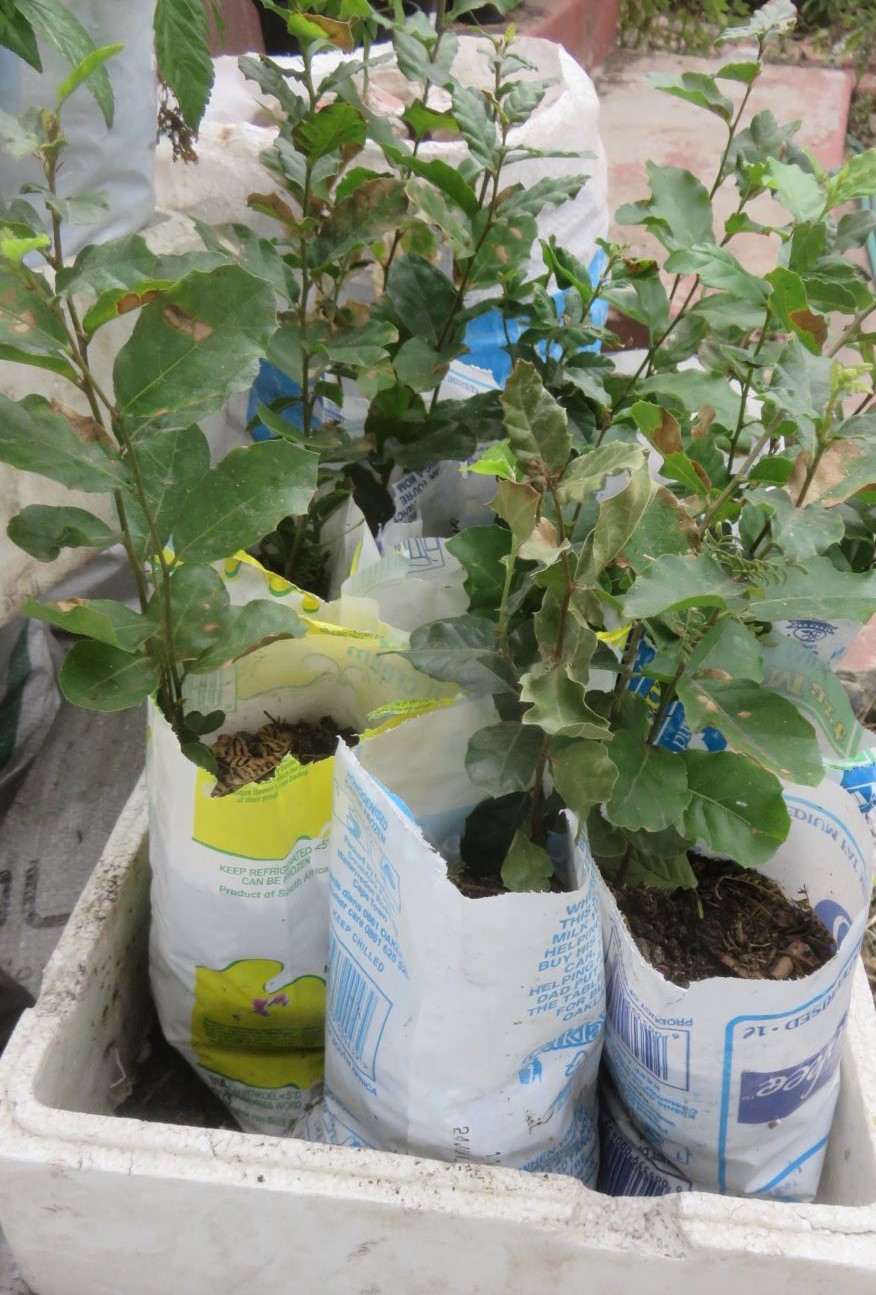
Cork oak (native to the Mediterranean)
Cork oak is another very big tree in
some circumstances, when very old, and a stunted short tree in
others. Cork oak (Qercus suber) is very easy, but also takes a while
to germinate. I have close to 100% germination. The roots grow
rapidly and can emerge from the bottom of the pot before you even see
the first leaves. Apparently being root bound stunts the trees in the
long term. In my tiny garden stunting is actually an advantage. I
planted acorns in a tray so thickly they were edge to edge. I
transplanted them into individual bags once they were 20cm high. The
death rate was really low. They are definitely hardy, but dislike
getting dried out, or suffering hot dry winds as saplings in the bag.
The bark of cork oaks is used to make cork and can be stripped
without killing the tree. The bark also makes them quite drought
resistant as cork is only slightly water permeable. The acorns are
edible but the process of leaching out the bitterness is tricky. The
saplings need more water than Harpephyllum. See how to do it here.
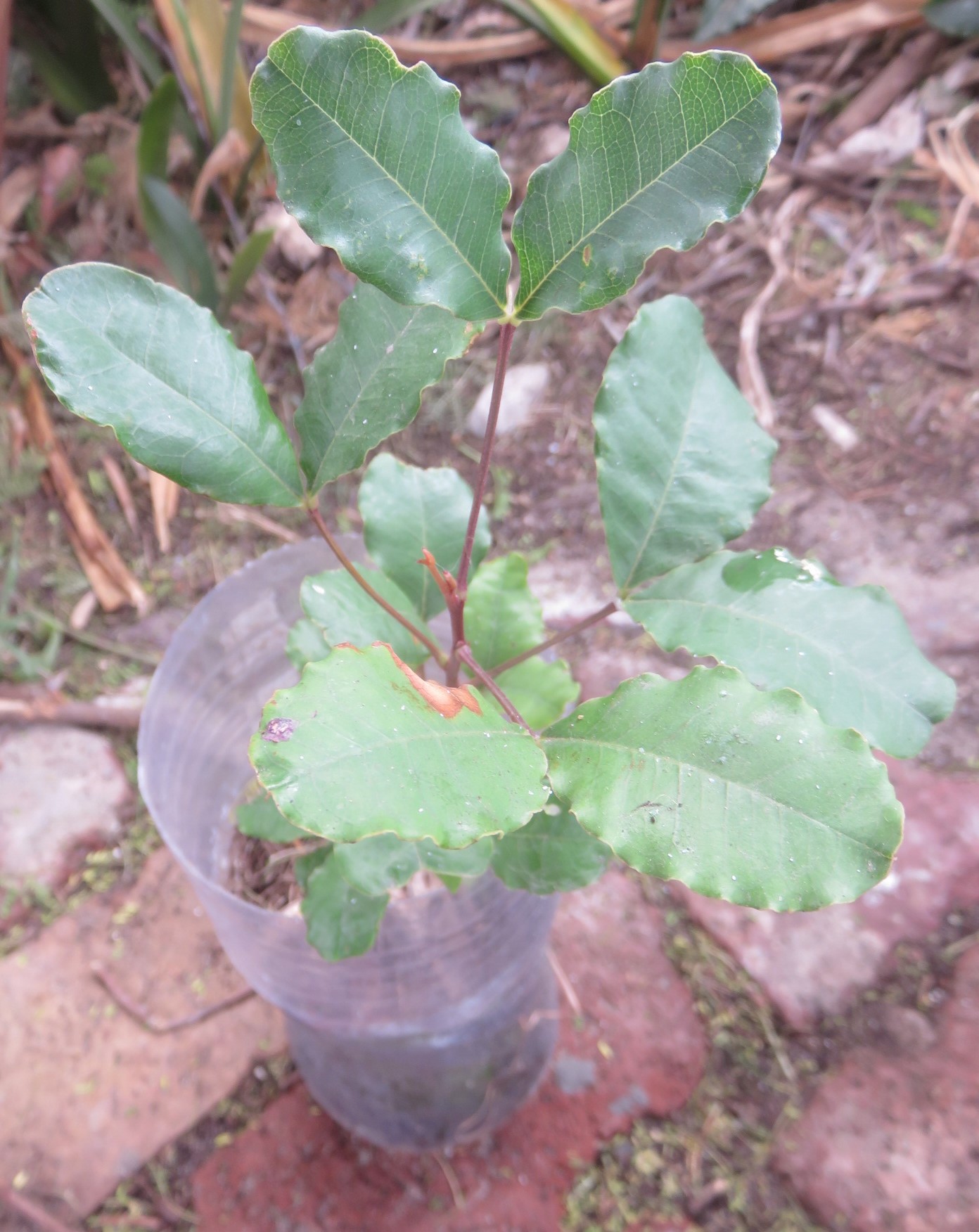 Carob sapling. I have over planted them in the forest. When they flower, all the males but one must be cut down.
Carob sapling. I have over planted them in the forest. When they flower, all the males but one must be cut down.Carob (native to the Mediterranean and middle east)
Carob trees get quite large, with a large umbrella shaped spread. Carob also has a large hard seed and takes a long time to germinate, but germinates well in terms of numbers. They grow very slowly and there seemed to be a problem with them not liking wind and direct sun as seedlings. Perhaps a slatted shade house would be ideal Here is my page on growing carob.
I move on to trees I've grown from cuttings
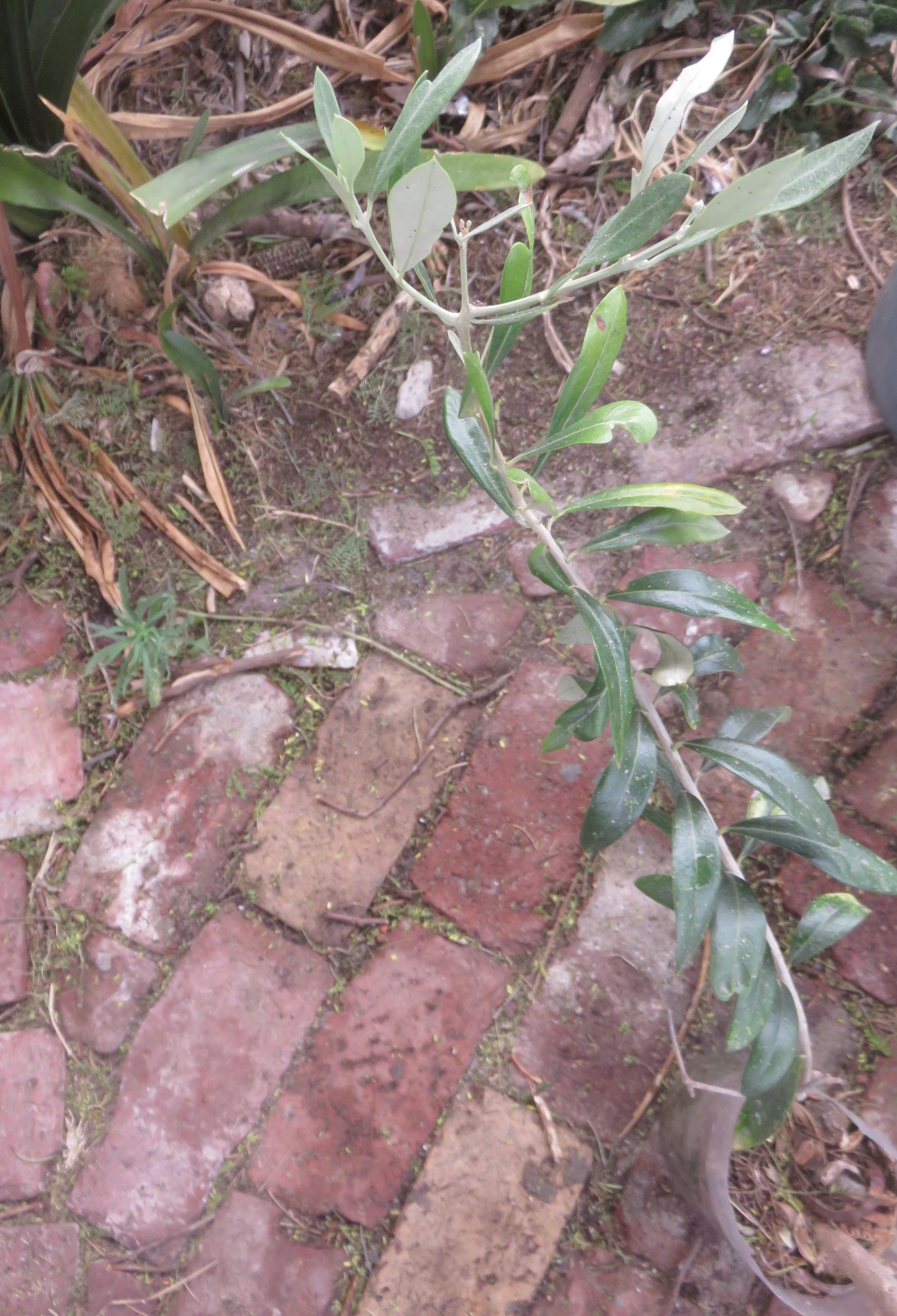 Olive cutting, the one survivor of hundreds of cuttings.
Olive cutting, the one survivor of hundreds of cuttings.Olive (native to Europe, middle East and Africa)
Olives are very useful and beautiful
trees. I took hundreds of cuttings to get a couple of viable rooted
branches. In my experience a nice thick stick with an elbow roots
better. Cigar thickness as opposed to the recommended pencil
thickness was better. With consistent watering the leaves stayed
green and didn't drop for a whole year, but I found no roots had
developed on most of them. With bottom heat, hormones and spray
irrigation, rooting is said to be up to 90%, but my primitive methods
obviously fell far short of that. I didn't try growing from seed,
because I wanted to clone from a very productive tree that I have. I've pages on olive propagation and harvest.
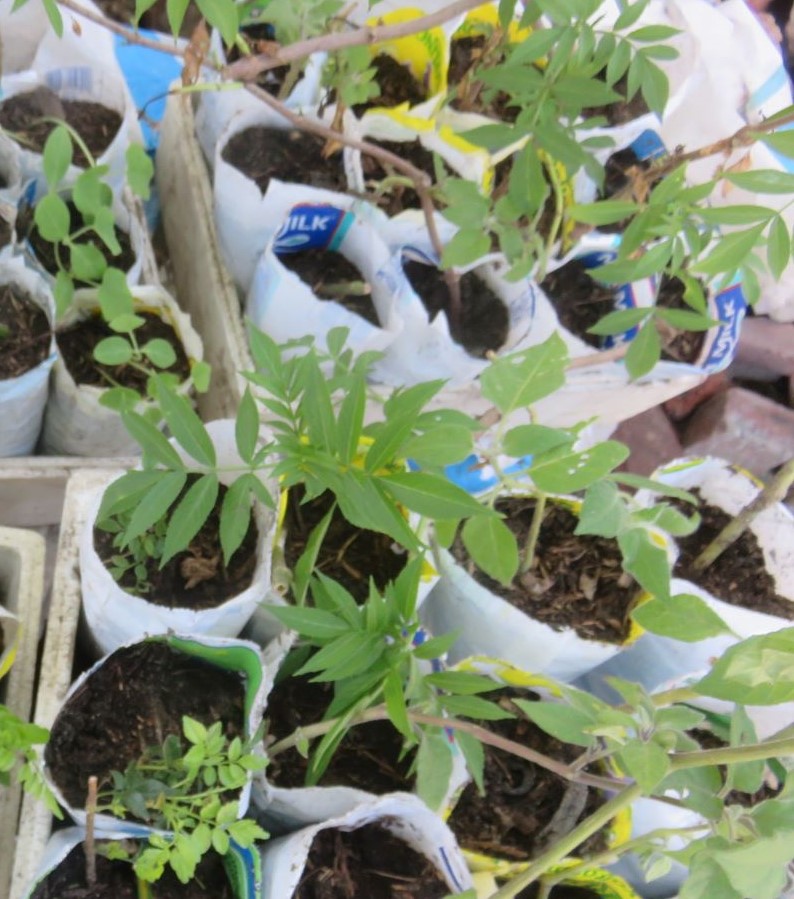 Elderberry cuttings take easily.
Elderberry cuttings take easily.Elderberry (native to Europe and north America, depending on species)
Elderberry works well from cuttings, almost 100%. Definitely cover the cuttings with a tranparent plastic bag to keep them humid, and in a spot thats not too hot. They are soon large enough to plant out, but they need a lot of water.They are pretty small trees, so I will include them again in the understorey section later.
 Mulberry cutting. One of the smaller ones. 7 out of 18 took.
Mulberry cutting. One of the smaller ones. 7 out of 18 took.Mulberry (native to Asia and Americas)
The mulberry is similarly easy to propagate. It is invasive, as is the Elderberry. Don't plant in areas where they can turn into a problem, like along river courses. The saplings need less water than the elderberry and waterberry but more than a carob for instance, and definitely more than Umgwenya or wild plum.
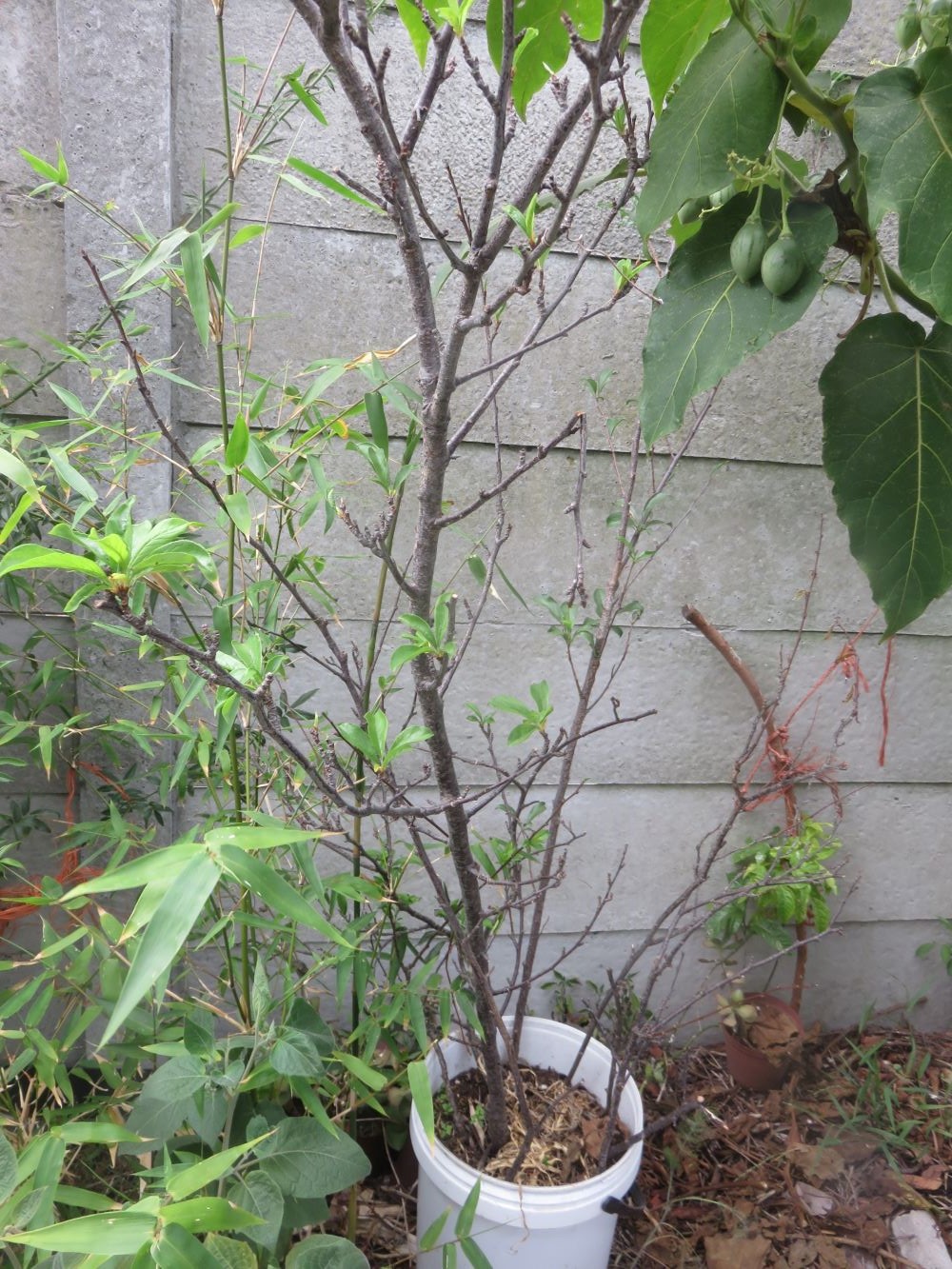 Some two meter long plum truncheons. Most of them put out leaves. However, I do not know if they have rooted.
Some two meter long plum truncheons. Most of them put out leaves. However, I do not know if they have rooted.Plum (native to Europe)
I've had some success with plum
truncheons (cuttings that are several meters in length), but I
haven't looked at the roots yet. They may just be leafing well
because of the stored energy in the wood. They do not like the wind.
Most of the cuttings need to be protected from the wind while
rooting.They probably are better suited to the later stages of the food forest's development. That is one could plant them into the half established forest after a couple of years, when there is sufficient height to offer wind shelter.
To recap on the food forest trees
So that is my list of some basic trees that are tough enough to go into the first planting of a Mediterranean food forest, with support species, in an area such as Cape Town which is on the drier, hotter side of "Mediterranean". I will talk about native support species, and the under storey, shrubs, herbs and ground covers in later articles. I already have a large collection of perennial food plants, a mix of all sizes of plants, as well as many articles on composting, mulching and conserving water. The links are on the carbon sequestration page you can click on below.
Tough food forest trees
Success guaranteed in Cape Town, South Africa with
elderberry
mulberry
plum ?
------
home page for links to articles on composting, growing plants and water conservation
------
The natural carbon sequestration machine, overview with all the other machine parts
Restore Nature Newsletter
I've been writing for four years now and I would love to hear from you
Please let me know if you have any questions, comments or stories to share on gardening, permaculture, regenerative agriculture, food forests, natural gardening, do nothing gardening, observations about pests and diseases, foraging, dealing with and using weeds constructively, composting and going offgrid.
SEARCH
Order the Kindle E-book for the SPECIAL PRICE of only
Prices valid till 30.09.2023
Recent Articles
-
Geography Research Task
Jan 31, 25 11:37 PM
To whom it may concern My name is Tanyaradzwa Madziwa and I am a matric student at Springfield Convent School. As part of our geography syllabus for this -
Eco Long Drop Pit Latrines Uganda
Nov 29, 24 02:45 AM
Good evening from the UK. My name is Murray Kirkham and I am the chairman of the International and foundation committee of my local Lindum Lincoln Rotary -
Landscape Architect
Oct 01, 24 10:42 AM
I so appreciate your informative description! Your experimentation and curiosity with the seeds, germination, and rearing of the maggot are exciting to
"How to start a profitable worm business on a shoestring budget
Order a printed copy from "Amazon" at the SPECIAL PRICE of only
or a digital version from the "Kindle" store at the SPECIAL PRICE of only
Prices valid till 30.09.2023





